RV Supercenter Stormwater Management
As impervious surfaces like asphalt and concrete are constructed to support communities, the footprint of the naturally pervious landscape that traditionally filters stormwater is reduced. To maintain a healthy and resilient watershed, it is important to balance this impervious construction with stormwater management practices that continue to filter the stormwater and remove suspended solids and nutrients that adversely affect downstream water sources. Luck Ecosystems’ RainScape Stormwater Management family of products ensures a healthier environment with engineered materials that keep waterways naturally pollutant-free. One highly effective stormwater best management practice is diverting surface runoff from the impervious surfaces to bioretention facilities. The bioretention facility can be a single basin or series of basins that use under-drains covered in stone and engineered media to filter the inflow of stormwater. The filtering process removes nutrients like phosphorous and nitrogen which are in turn used to promote plant growth in the basins. Bioretention basins are not only a highly effective stormwater management practice but they also provide community green space where native plant species can flourish.
In Central Virginia a large RV dealer constructed a new supercenter facility to serve the Mid-Atlantic region. The new facility includes a large shop, showroom and expansive asphalt parking area for RV storage and customer parking. The large acreage of impervious surface required stormwater management facilities to be constructed in order to filter the large volume of stormwater runoff that would be created by the buildings and asphalt surfaces. Luck Ecosystems provided 2000 tons of biofilter media to construct two bioretention basins to manage the site’s stormwater runoff. Large rirpap forebays were constructed to dissipate the energy of the stormwater inflow and provide pretreatment of the stormwater before entering the basins. During construction the contractor took proactive measures to reduce sediment from entering the basins and the media. The basins were then planted with native plant species to provide phosphorous uptake and removal from the downstream waterways.
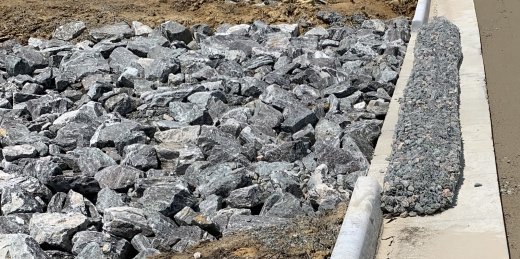
Various inflow filters can be used during construction to reduce sedimentation of the media
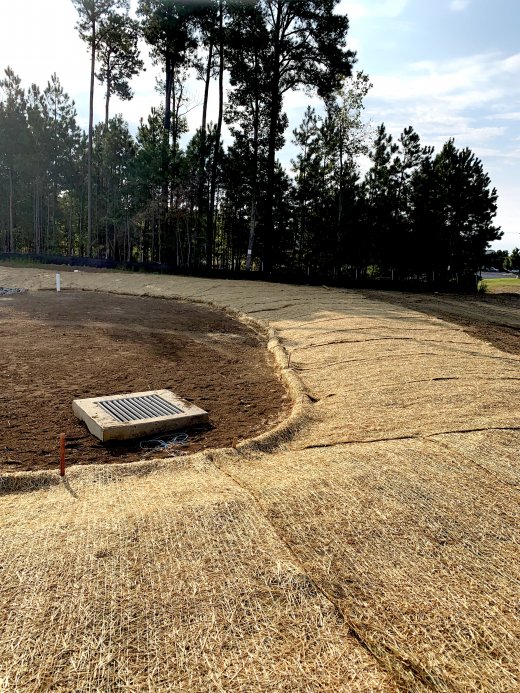
Filter socks and straw mats are often placed around basins until surrounding surfaces have a stable stand of grass
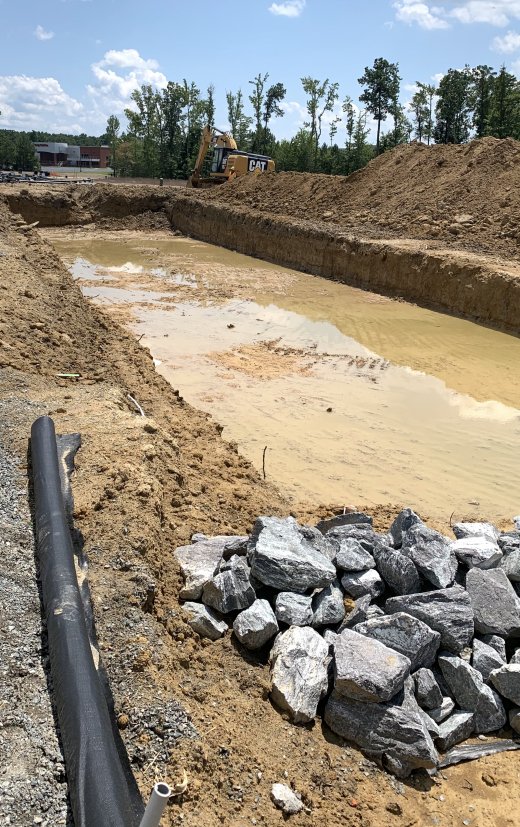
Excavated basin before lining and erosion control measures have been installed
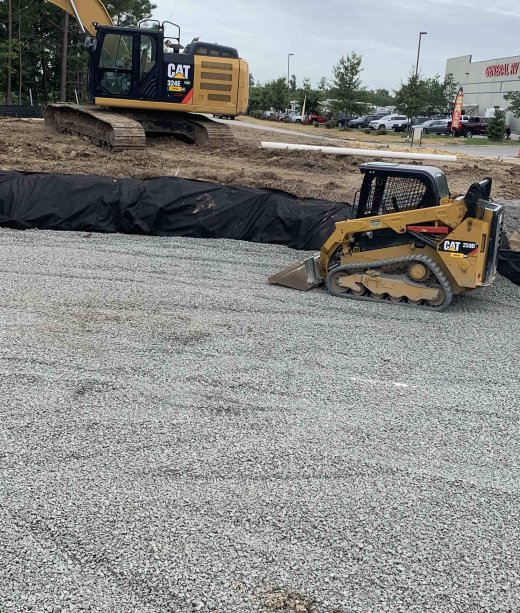
Clean stone is placed in bottom of the basin and covers the under drain system
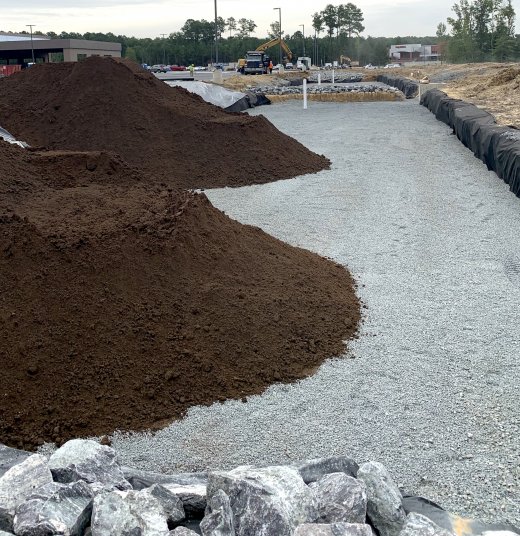
Care should be taken when placing media to ensure that over compaction does not occur
